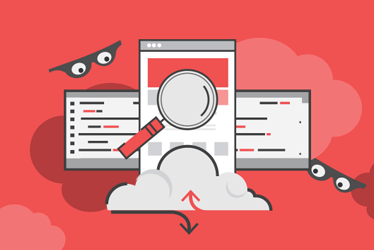
Hundreds of websites around the world face the predicament of hacking and the struggle to restore the sites back to their original glory is real! The immediate steps to recover a hacked website include doing investigation and research, informing the host, resetting all passwords, scanning, and updating, conducting a detailed website security check, Verifying financial data and accounts, performing a security audit, and ensuring the safety of all the website users. Recovering a website once it is being hacked would be overwhelming! Web application security is essential to protect the user’s data and also maintain the reputation of the website. Exposure to unknown vulnerabilities and data breaches are high in probability thus taking precautious measures to protect web applications is advisable. The following steps may be followed to make the process of cleaning a hacked website easier:
The first step in cleaning a hacked website is to locate support resources, removal of the infected URL’s or data. Right before going into maintenance mode to clean the hacked website, it is necessary to make a backup of the compromised data, fix the issue, and restore the backed-up content once the site is ready to go live. Depending on the kinds of backup that was created before the site was hacked the path to be followed is chosen. If the backup is clean and current then restoration, installation of software upgrades, elimination of unused software, vulnerability correction, password changes, and all the damages assessed must be corrected to clean the website. In case of an outdated backup then the current infected site must be backed up including the server log files, site file system, database and custom files and configuration followed by the same steps as above after which a difference between the cleaned and the infected backup to ensure the site is completely clean of infections. In the worst-case scenario of no availability of a backup of the site then two backups need to be made and changes must be made in one backup.
From the above-mentioned points on cleaning a website based on the types of backup available, it is clear that Scheduling regular backups of the site is essential to making a recovery process quicker. Backup may be automated or manually done with the options galore. Backups provide website owners with the golden opportunity to restore the last backed-up version of the site prior to the attack. Ensuring backups are in place and properly scheduled to avoid the risk of losing content, users, and reputation. Advanced technology such as the cloud could be used for additional backup.
A WAF(Web Application Firewall) is the first level of shielding in web application security. It is positioned in between the web server and the users and filters bad requests and malicious traffic. WAF not only shields the website by soldiering in front but also refreshes the cache ensuring the speed is high at all times. It prevents hacking attempts and alerts the hosts about any malicious traffic. AppTrana provides an intelligent, cohesive, and managed WAF solution with up-to-date advanced security. When a website is hacked the WAF which is the first shield of the site, tries to fix the issues as it is regularly updated to stay up to date with the attacking trends. Once, the first level of fixing is done the site is then handed over to the developers for fixation. The cleaning up of the hacked website becomes easier with a WAF because of its ability to identify the kind of attack and first aid fixing that it provides thus, speeding up the cleaning process. The recovery of a web application may take up to a few months but with WAF the process is very quick and instant as it involves continuous monitoring.
Expertise knowledge and skills of security vendors would come in handy while recovering a hacked website. Trusted security partners would always stay updated on all the latest hacking methods and ensure that the security system is monitored at all times. Entrusting the vendor with handling website security checks and deployment of security tools whenever necessary is important for all businesses. In the worst case of a website being hacked in spite of all the security measures taken the security vendor would be equipped with everything required for a quick clean up and faster recovery of the site. The entire process of backing up the site regularly, monitoring, updating, and checking would be managed by the vendors and they would be committed to the job of securing a website as the reputation of the vendor might be affected if anything went wrong.
It can be understood and observed that hacking is prevalent and no website is spared! The key to protecting a website lies in the above-mentioned points of staying precautious at the same time taking the required measures to speed up the recovery process in the worst-case scenario.
This post was last modified on September 16, 2021 15:03
A Managed WAF is a comprehensive cybersecurity service offered by specialized providers to oversee, optimize,… Read More
Explore crucial tactics like Asset Inventory, Patch Management, Access Control & Authentication, and additional best… Read More
Delve into the data privacy questions including consent protocols, data minimization strategies, user rights management,… Read More